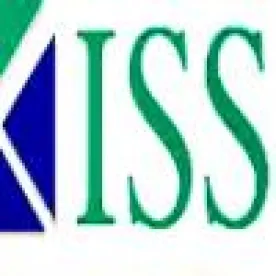As discussed in our previous client alert,1 Institutional Shareholder Services (ISS), the leading proxy advisory firm, will employ a new methodology for determining pay-for-performance alignment when making voting recommendations at public company shareholder meetings held on or after February 1, 2012. On December 20, 2011, ISS published a white paper that provides additional information on how ISS will evaluate pay-for-performance alignment and construct peer groups when conducting such evaluations. Although the white paper answers some of the questions raised by ISS’ initial announcement of the new pay-for-performance methodology, we caution that it does not answer all questions.
ISS also recently published its 2012 U.S. proxy voting summary guidelines and 2012 U.S. proxy voting concise guidelines, as well as information about a new version of its Governance Risk Indicators (GRId), including a technical document and frequently asked questions. The proxy voting summary guidelines include updated industry burn rate tables for Russell 3000 and non-Russell 3000 companies that ISS will use when formulating its voting recommendations for equity-based compensation plans to be voted on at public company shareholder meetings held on or after February 1, 2012.
In light of ISS’ influence on the voting decisions of many institutional investors, issuers and their general counsels, compensation executives, compensation committee members and other compliance personnel should become familiar with these ISS publications, in addition to the guidance of other proxy advisory firms and the voting policies of their major institutional investors, in connection with making compensation and governance decisions in advance of the 2012 proxy season and preparing 2012 proxy statement disclosure. Although issuers should consider ISS’ voting guidelines in making those decisions, issuers should continue to focus on adopting compensation policies designed to achieve their business goals, to implement their business strategies and to increase long-term shareholder value. Issuers should also continue to be mindful of the need to provide clear, comprehensive and concise disclosure of those compensation policies in their proxy statements. Interested parties should watch for additional guidance on key policy issues that ISS expects to provide later this month in the form of frequently asked questions.
New Pay-for-Performance Alignment Methodology
Pay-for-performance alignment is a key element ISS uses to formulate voting recommendations on management say-on-pay votes. Under its new methodology, ISS will first conduct a quantitative analysis of both relative and absolute pay-for-performance alignment for issuers in the Russell 3000 index. If the quantitative analysis indicates “significant unsatisfactory long-term pay-for-performance alignment” (or as to issuers not included in the Russell 3000 index, ISS’ initial analysis otherwise indicates misaligned pay-for-performance), ISS will, as it has historically done, conduct an “in-depth” qualitative analysis before issuing its voting recommendation. If ISS’ pay-for-performance analysis identifies a “significant” pay-for-performance misalignment, it will recommend a vote against management’s say-on-pay proposal. If a management say-on-pay proposal is not on the ballot of an issuer with an identified significant pay-for-performance misalignment, ISS will instead recommend a vote against or a withhold vote for the members of the compensation committee and potentially the entire board of directors. ISS has indicated that it does not expect the new pay-for-performance methodology will significantly impact its mix of voting recommendations in 2012.
Some issuers may want to use the information in the white paper to conduct their own quantitative analysis of their pay-for-performance alignment using the ISS methodology (either on their own or with the assistance of their compensation consultant). The results of such an effort will likely be indicative only and will not provide absolute certainty as to how ISS will evaluate an issuer’s pay-for-performance alignment. However, if it appears from the issuer’s analysis that ISS is likely to identify a pay-for-performance misalignment for the issuer, the issuer should consider what actions, if any, it may wish to take. Potential actions include changes to compensation programs, enhanced proxy statement disclosure, engagement with ISS to attempt to provide information for ISS’ use in its qualitative evaluation of the issuer’s pay-for-performance alignment or a direct appeal to shareholders to explain why ISS’ analysis is incorrect and its voting recommendations should be ignored.
Peer Group Construction
ISS will construct a peer group for each company analyzed under the pay-for-performance methodology for use in ISS’ quantitative analysis of each company’s pay-for-performance alignment.
Peer group selection methodology. An issuer’s peer group will consist of between 14 and 24 companies based on the issuer’s Global Industry Classification Standard (GICS) classification, revenue (assets will be used for financial companies) and market capitalization. Peer groups will be constructed twice each year as of December 1 and June 1 based on the following data provided by Research Insight Quarterly Data Download:
- in the case of non-financial companies, the sum of the most recent trailing four quarters’ revenues;
- in the case of financial companies, the total assets as of the most recent quarter-end; and
- the 200-day average stock price multiplied by the outstanding shares.
When constructing the peer group, ISS will first create a “potential comparison universe” by selecting companies in ISS’ executive compensation database2 in the same two-digit GICS category as the subject issuer that have between 0.45 and 2.1 times the subject issuer’s annual revenues (or assets for financial companies) and between 0.2 and 5 times the subject issuer’s market capitalization. ISS then will narrow the comparison universe to those companies in the subject issuer’s six-digit GICS category and select first those companies “closest in size” to the subject issuer (which it appears ISS will generally measure by revenues/assets). Where possible, both larger and smaller companies are then selected to keep the subject issuer at or near the median size of the selected peer group. Up to 24 peer companies can be selected from the six-digit GICS category, but the peer group is considered complete once its reaches 14 members. If 14 peer companies are not selected from the six-digit GICS category, ISS repeats this selection process until 14 companies are selected, first using companies in the subject issuer’s four-digit GICS category and, if necessary, companies in the subject issuer’s two-digit GICS category.
Supplemental peer group selection methodologies. When the standard peer group selection methodology yields fewer than the minimum 14 companies (except for the “super-mega” non-financial companies discussed below), ISS will relax the revenue, but not the market capitalization, parameter used to create the “potential comparison universe” while retaining peer companies chosen under the standard selection methodology. ISS will add larger and smaller peer companies to keep the subject issuer as close to the median size level as possible.
ISS notes that there are approximately 25 “super-mega” non-financial issuers (each with greater than $50 billion in revenue and at least $30 billion in market capitalization) that do not have sufficient industry peers to form a peer group under ISS’ standard selection methodology. As a result, these 25 issuers will constitute a stand-alone peer group for purposes of the quantitative pay-for-performance analysis conducted for each of the peer group members. Industry-specific performance will be considered in any qualitative pay-for-performance analysis conducted for a member of this peer group.
Quantitative Analysis
The new quantitative analysis is designed to test the alignment of chief executive officer (CEO) pay with an issuer’s performance and, in the process, to identify outlier companies that have demonstrated “significant unsatisfactory long-term pay-for-performance alignment.” ISS indicates that its extensive back-testing of its new quantitative analysis methodology shows that the results of applying the new methodology generally align with the say-on-pay voting outcomes during 2011.
What ISS measures. ISS measures relative and absolute alignment of CEO pay and issuer performance over time using three measures, all of which use CEO pay as an analytic factor and two of which use the issuer’s total shareholder return (TSR) as an analytic factor. Despite ISS’ recognition that the summary compensation table appearing in proxy statements does not necessarily provide information about the compensation that a CEO actually realizes for any year shown in that table, ISS nevertheless will perform its analyses by using the CEO’s total compensation as reflected in the summary compensation table (but using standard valuation assumptions for equity-based grants), taking into account all elements of pay. As a result, ISS will frequently assess pay-for-performance alignment for a particular issuer based on a mix of compensation actually received and compensation opportunities that may or may not be realized and received in future years. Moreover, in light of the variations in pay programs that may occur among the companies in an issuer’s peer group, the relative alignment measures may produce anomalous, even unfair, comparisons among the peer group companies.
Performance will be reflected in the analysis by TSR. In one instance, the white paper notes that TSR includes the reinvestment of dividends and in another description of TSR, the white paper remains silent on the effect of dividends on the calculation of TSR. Although the peer group comparisons will be performed over the same periods for all peer group members, ISS does not indicate that its methodology will adjust for the occurrence of extraordinary corporate events (e.g., stock splits) or other factors, such as the timing and frequency of dividend payments and earnings releases, and how market factors may affect some issuers’ stock prices differently (and outside any standard statistical deviation) than they affect the stock prices of other issuers. Although ISS appears to believe that the size of its peer groups will serve to temper the effect of such events on the analyses, some issuers may justifiably question the true utility of TSR as an accurate indicator of performance.
Pay-for-performance alignment measures. The new quantitative analysis employs the following pay-for-performance alignment measures.
Relative degree of alignment (RDA). RDA is a relative measure that compares an issuer’s percentile ranks of CEO pay and TSR against its ISS-constructed peer group. To calculate the measure, ISS first calculates the subject issuer’s percentile ranks amongst its peer group for both CEO pay and TSR for one- and three-year periods. TSR for both the subject issuer and the peer group companies is measured as of the last day of the month closest to the subject issuer’s fiscal year-end. A combined percentile rank for both CEO pay and TSR is then created by assigning a 40% weighting to the one-year percentile ranks and a 60% weighting to the three-year percentile ranks. The RDA value is then created by subtracting the combined CEO pay rank from the combined TSR rank. RDA values can range between -100 and +100, with -100 representing high pay for low performance, zero representing pay commensurate with performance and positive values representing low pay for high performance.
Multiple of median (MOM). MOM is a relative measure that compares the subject issuer’s prior-year CEO pay against the prior-year median CEO pay for the subject issuer’s ISS-constructed peer group. To calculate the measure, ISS divides the subject issuer’s CEO pay by the peer group’s median CEO pay. MOM values can theoretically range from zero to infinity, with a multiple of 2.33x and higher possibly triggering a high concern level with the alignment of pay and performance.
Pay-TSR alignment (PTA). PTA is an absolute measure that compares the trends in the subject issuer’s CEO pay against the trends in the subject issuer’s TSR over a five-year period to determine whether CEO pay and TSR are directionally aligned. ISS does not intend for PTA to measure whether pay and performance rise and fall in tandem on a year-over-year basis, but rather to serve as a long-term measure of whether pay and performance are directionally aligned. To calculate the measure, ISS first uses linear regressions (weighted least-squares) to create CEO pay and TSR slopes for the prior five-year period. The regressions are weighted to place “slightly” more emphasis on recent years. ISS then subtracts the CEO pay slope from the TSR slope to create the PTA value. PTA values are theoretically unbounded, with a positive differential indicating that TSR is increasing faster or declining slower than CEO pay and a negative differential indicating that TSR is increasing slower or declining faster than CEO pay.
Overall quantitative analysis. Using the three calculated values for RDA, MOM and PTA, ISS identifies issuers that are “significant” outliers in each measure based on empirical observation of the distribution of the measures within ISS’ back-testing universe3 and on the relative strength of the relationship of each measure to the outcomes of 2011 management say-on-pay votes. In its tests, ISS determined that RDA had the strongest relationship with 2011 management say-on-pay voting results and, therefore, RDA is effectively weighted more heavily in the overall quantitative analysis. ISS views the scores on the three measures as additive (i.e., concerns raised for multiple measures can accumulate to provide evidence of a potential pay-for-performance “disconnect”). ISS also considers the methodology to identify whether a particular measure for an issuer is, by itself, a sufficient outlier to demonstrate a potential disconnect or whether it is a sufficient outlier to demonstrate a potential disconnect in conjunction with one or both of the other measures. The white paper contains no indication that ISS will calculate any formal cumulative score based on a combination of all three measures.
The following table sets forth for each measure the level at which ISS would consider an issuer to be (1) an outlier triggering medium concern, which may trigger high concern when combined with other measures, and (2) a “significant” outlier, which triggers high concern by itself.

In ISS’ calculations, a high-concern issuer received, on average, approximately 11.5% less shareholder support for the say-on-pay vote in 2011 than a low-concern issuer.
Qualitative Analysis
If the quantitative analysis indicates “significant unsatisfactory long-term pay-for-performance alignment” (or as to issuers not included in the Russell 3000 index, ISS’ initial analysis otherwise indicates misaligned pay-for-performance), ISS will continue with its historical approach of applying an “in-depth” qualitative analysis before issuing its voting recommendation The discussions of the new evaluation methodology in ISS’ prior publications and the white paper do not articulate a precise standard by which ISS will determine when significant unsatisfactory alignment is present. Further, it is unclear whether ISS will deem Russell 3000 issuers to have a significant unsatisfactory alignment only if the quantitative analysis triggers a high concern level. Moreover, the white paper does not provide any guidance as to how ISS will determine whether a pay-for-performance misalignment is “otherwise suggested” for issuers not included in the Russell 3000 index.
The qualitative analysis is designed to identify potential causes for the misalignment and mitigating factors. The qualitative analysis may include consideration of some or all of the following:
- Strength of performance-based compensation, focusing on:
- the ratio of performance- to time-based equity awards;
- the overall ratio of performance-based compensation to total compensation, focusing particularly on the compensation committee’s most recent decision-making;
- recent cash awards paid and the award opportunities (long-term incentive grants) intended to drive future performance;
- performance metrics and goals and whether they are fully disclosed and “reasonably challenging” in the context of past performance and goals and guidance the issuer has provided to analysts; and
- use of a single metric, or similar metrics, in either or both of the short- and long-term incentive programs;
- Disclosed peer group benchmarking practices to determine whether those may be a contributing factor to an apparent long-term pay-for-performance disconnect (e.g., a preponderance of self-selected peers that are larger than the subject issuer or targeting above-median compensation levels may drive up compensation without regard to performance);
- The rigor of the performance goals (if any) that generated any cash payouts driving the pay-for-performance disconnect, as well as recent results of financial and operational metrics (in both absolute terms and relative to peers), such as growth in revenue, profit and cash flow; and
- Any special circumstances, including appointment of a new CEO in the prior fiscal year or “unusual” equity grant practices (e.g., biennial or triennial awards).
ISS fails to make clear the effect of the qualitative analysis on its voting recommendation where an issuer’s quantitative analysis shows a significant pay-for-performance misalignment. Presumably, the qualitative analysis may result in a favorable vote recommendation if the qualitative analysis suggests that the results of the quantitative analysis are anomalous and not indicative of the actual pay-for-performance alignment.
GRId Update
ISS provides GRId ratings to its investor clients to aid them in identifying and evaluating an issuer’s key governance practices in four areas: audit, board of directors, compensation and shareholder rights. ISS notes in a recent technical document that since its launch two years ago, GRId has provided “issuers deeper insight into investor perspectives on their governance practices” and enabled institutional investors “to flag potential risk in their portfolios, identify issues and companies for engagement, and analyze companies as part of the investment process.” The GRId ratings are absolute measures of an issuer’s governance practices and are not measured against peer issuers.
Changes to the new version of GRId’s U.S. methodology (GRId 2.0) include, among other things, additional questions incorporating ISS’ new pay-for-performance quantitative methodology, additional information on related-party transactions and board relationships, a more comprehensive evaluation of takeover defenses and changes to the scoring model. In a change from past practice, GRId scores and ISS voting recommendations will be more closely linked such that GRId scores may serve as an indicator for ISS voting recommendations.
The entire GRId universe of U.S. issuers will be scored under GRId 2.0 on February 24, 2012. On February 20, 2012, ISS will post to its data verification site updated GRId 2.0 data profiles for U.S. issuers. Issuer representatives should be prepared to access and review their issuer’s free GRId data profile through the data verification site and to use the online tool to inform ISS of any necessary corrections by February 23, 2012. Instructions for how to verify your issuer’s GRId data profile can be found here.
1. Please see our client alert dated December 1, 2011, ISS Publishes 2012 Updates to Benchmark U.S. Proxy Voting Guidelines.
2. The ISS executive compensation database includes all companies included in the Russell 3000 index, plus the public companies disclosed as peer group companies in the proxy statements of Russell 3000 companies, for a total of more than 4,000 companies.
3. ISS back-tested the measures by analyzing pay and performance data for 2,500 issuers from the years 2006-2010. ISS constructed peer groups for each issuer using the peer group methodology discussed above and calculated each of the three quantitative measures.






 />i
/>i

